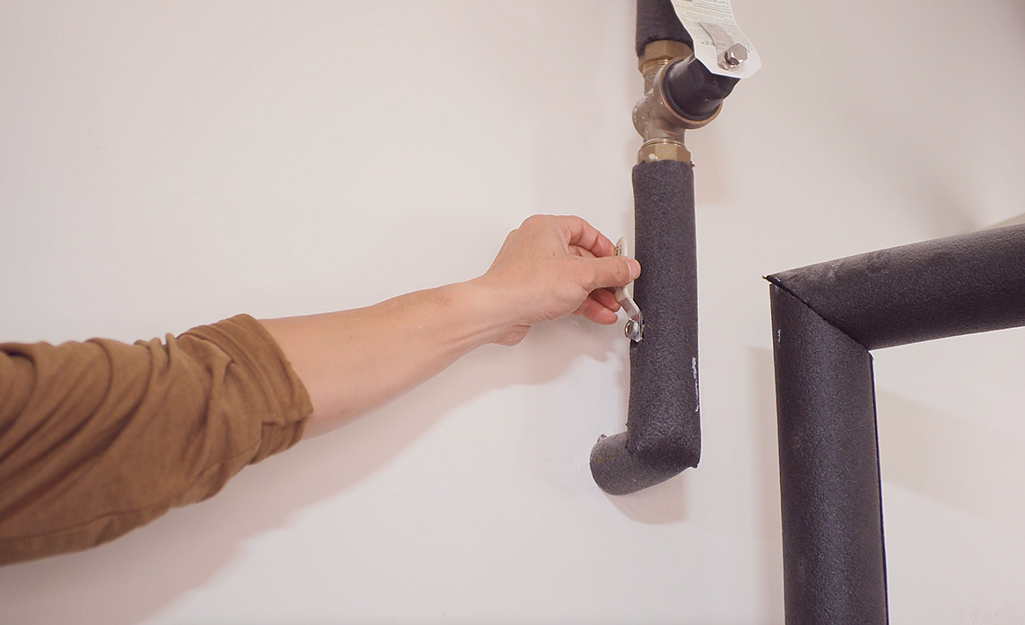How It's Essential to Resolve a Faulty Faucet
How It's Essential to Resolve a Faulty Faucet
Blog Article
We've stumbled upon this great article pertaining to What Causes Leaky Faucets & How To Fix Them below on the internet and decided it made perfect sense to share it with you on this site.

Trickling taps might look like a small aggravation, but their impact goes beyond just the inconvenience of the noise. From wasting water to incurring unnecessary monetary expenses and health and wellness dangers, neglecting a leaking faucet can result in various consequences. In this article, we'll delve into why it's crucial to resolve this typical home issue promptly and properly.
Waste of Water
Environmental Influence
Leaking faucets add considerably to water wastage. According to the Epa (EPA), a single tap dripping at one drip per secondly can waste greater than 3,000 gallons of water per year. This not just pressures water resources yet also impacts environments and wildlife dependent on them.
Step-by-Step Guide to Taking Care Of a Dripping Tap
Tools Needed
Prior to trying to fix a dripping tap, collect the needed tools, including a flexible wrench, screwdrivers, substitute components (such as washing machines or cartridges), and plumber's tape.
Typical Faucet Issues and Their Solutions
Determine the kind of tap and the details concern creating the drip. Usual troubles consist of damaged washing machines, rusty valve seats, or malfunctioning O-rings. Describe supplier guidelines or on-line tutorials for detailed assistance on repair services.
Financial Expenses
Raised Water Expenses
Past the ecological impact, dripping taps can pump up water bills substantially. The gathered waste over time converts into greater utility costs, which could have been prevented with timely repair services.
Possible Building Damage
Additionally, prolonged leaking can cause harm to fixtures and surfaces bordering the tap. Water buildup can cause staining, rust, and even architectural concerns if left neglected, causing added repair costs.
Health Issues
Mold and Mildew Growth
The constant presence of dampness from a trickling faucet creates a perfect environment for mold and mildew and mold growth. These fungi not only endanger indoor air quality yet likewise position health threats, specifically for people with respiratory conditions or allergic reactions.
Waterborne Illness
Stationary water in dripping taps can end up being a breeding ground for bacteria and various other microorganisms, boosting the danger of waterborne conditions. Pollutants such as Legionella microorganisms thrive in stationary water, possibly resulting in severe illnesses when ingested or inhaled.
Do it yourself vs. Specialist Repair
Benefits and drawbacks of Do It Yourself Repair
While some may attempt to repair a leaking tap themselves, do it yourself repair services feature their very own collection of difficulties. Without proper knowledge and tools, DIY efforts can aggravate the concern or cause insufficient repair work, prolonging the trouble.
Advantages of Employing a Professional Plumber
Hiring an expert plumber guarantees that the underlying source of the leaking faucet is resolved successfully. Plumbings have the experience and devices to detect and repair tap issues effectively, conserving time and minimizing the danger of more damage.
Environmental Duty
Individual Contribution to Preservation
Taking duty for fixing leaking taps straightens with more comprehensive efforts toward water conservation and ecological sustainability. Every individual's actions collectively make a significant impact on protecting valuable resources.
Sustainable Living Practices
By prioritizing prompt repairs and adopting water-saving behaviors, people add to lasting living techniques that profit both existing and future generations.
Preventive Measures
Regular Upkeep Tips
To avoid leaking faucets, execute regular maintenance such as cleaning aerators, inspecting for leaks, and replacing damaged parts promptly. In addition, think about installing water-saving tools or upgrading to extra effective components.
Significance of Prompt Services
Attending to trickling faucets as quickly as they're seen avoids more water wastage and prospective damages, inevitably saving both water and money over time.
Effect On Residential Property Worth
Assumption of Well-Maintained Property
Maintaining a residential property in good condition, consisting of attending to upkeep problems like leaking faucets, enhances its perceived worth and worth amongst prospective buyers or tenants.
Impact on Resale Value
Residences with well-kept plumbing fixtures, consisting of faucets, command greater resale worths in the real estate market. Resolving leaking faucets can add to a positive impact during property evaluations and arrangements.
Conclusion
Resolving a dripping faucet surpasses mere comfort; it's an important step towards conserving water, decreasing monetary prices, and safeguarding health and wellness and residential property. Whether via do it yourself repairs or professional support, acting to take care of leaking taps is a little yet impactful method to promote accountable stewardship of resources and contribute to a healthier, extra lasting future.
How to Fix a Leaky Faucet: Step-by-Step Repair Guide
A leaky faucet may seem like a simple annoyance, but if it's not fixed promptly, that leak could cost hundreds to potentially thousands. From water damage to mold, mildew, and high water bills, even a tiny leak can be catastrophic if left unattended. Damage like this can even affect the overall value of your home, so it's important to take the right approach for leaky faucet repair. You may need the help of a plumber in some cases, but we've got a few tips you can try on how to fix a leaky faucet before calling the pros.
Four Faucet Types
When you're learning how to fix a leaky faucet, the first step is knowing what kind of faucet you're working with! There are four common types.
Cartridge Faucets
Cartridge faucets come in one- or two-handled varieties. In one-handled cartridge faucets, hot and cold water combines in a single cartridge. In the two-handled versions, hot and cold water are controlled separately and mixed in the faucet.
Ball Faucets
Ball faucets have a single lever you push up and down to adjust the pressure and rotate to change the temperature. A slotted metal ball controls the amount of water allowed into the spout.
Compression Washer Faucets
They're the oldest type of faucet, but they're still used in many homes — especially older ones. Compression faucets have two separate handles that, when turned, raise or lower the washer that seals a water valve. This valve stops water from flowing through the faucet when it is turned off.
Disc Faucets
Disc faucets rarely need to be repaired due to their maintenance-free design. The water flow is controlled by two discs — the upper one raises and lowers against a fixed lower disc, creating a watertight seal. If your disc faucet starts leaking, you may need to replace the seals or clean residue buildup from the inlets.
Fixing a Leaky Faucet
Step 1: Turn Off the Water
Whether you're learning how to fix a leaky bathtub faucet or how to fix a leaky kitchen faucet, always turn off the water supply to your working area when you're fixing a leak. The last thing you want is a flood added to your list of things to fix.
Look for the shutoff valves below your sink or around the tub and turn them clockwise to stop the water flow. If your faucet doesn't have shutoff valves, you may need to turn off the water for the whole house. Check to make sure it's off by turning the faucet on. If nothing comes out, you're ready to start the repair.
Step 2: Take Apart the Faucet
How you disassemble your faucet depends on the type of fixture you have. You can use a flathead screwdriver to remove the caps on top of the handle or handles for cartridge and compression faucets. Inside, you should see handle screws. Unscrew these with a screwdriver to remove the handle.
Disc- and ball-style faucets will typically have an inlet screw near the handle, and removing that will reveal the interior of the faucet.
Detach the Valve Stem
For cartridge- and compression-style faucets, you'll see the inner valve stem or cartridge once you remove the faucet handles. If you have a compression faucet, unscrew the brass valve stem. If you have a cartridge faucet, pull out the cartridge. If your cartridge has been in place for a while, it may require some tools or extra force to remove it due to mineral deposits.
Examine and Replace Parts
Once you've removed the parts, check them out to confirm what needs to be replaced. You may see corroded rubber washers, O-rings, stems, or cartridges. On a ball-style faucet, check the seats and springs for damage.
If you need to repair a leaky disc faucet, check the inlet and seals on the lower disc.
Once you determine what parts must be replaced, visit your local hardware store. Bring the damaged parts with you to ensure you can purchase the correct components to replace them.
Clean Valves and Faucet Cavity
If you've removed a stem or cartridge, you may notice mineral buildup in the faucet's threads. Use white vinegar to clean the valve seat by soaking it for a few minutes, then scrub it away with a soft toothbrush and rinse with warm water. You can also clean the interior of the faucet in the same way.
Reassemble the Faucet
Once your faucet is cleaned and the required parts have been replaced, it's time to reassemble it. Put the pieces back together and slowly turn the water supply back on. Doing this slowly is crucial because too much initial water pressure can damage the new hardware you've just installed.
https://homewarranty.firstam.com/blog/how-to-fix-leaky-faucet

I'm very serious about Should I Repair or Replace a Leaky Faucet? and I am assuming you enjoyed the new entry. If you please take the opportunity to distribute this article if you liked it. We recognize the value of your readership.
Report this page